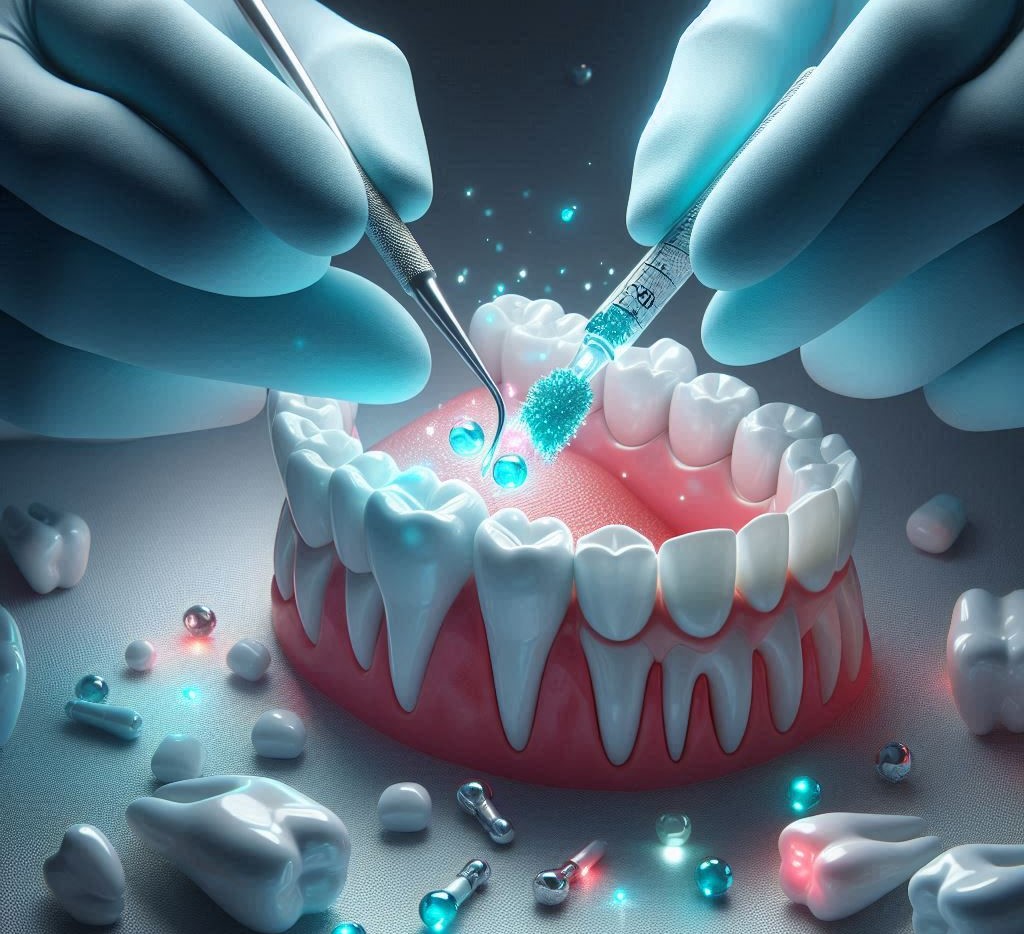Dental fillings are commonly used to restore teeth that have been affected by decay, cracks, or other damage. Once in place, fillings help to seal off cavities, reduce pain, and prevent further damage. However, despite their durability, fillings are not impervious to wear and tear. One of the major contributing factors to the lifespan of fillings is diet. Foods and beverages can affect the materials of fillings and the surrounding tooth structure in various ways. In this guide, we’ll explore how specific dietary habits influence the longevity of dental fillings, focusing on sugar, acidity, hydration, and the impact of specific food types.
Overview of Dental Fillings
Before we dive into how diet affects fillings, it’s important to understand the different types of fillings and their properties.
Types of Fillings
There are several materials used for dental fillings, and each has unique properties regarding durability, aesthetics, and susceptibility to dietary influences. The most common types of fillings include:
- Amalgam Fillings (Silver Fillings):
- Composition: Made from a mixture of metals including silver, mercury, tin, and copper.
- Durability: Highly durable and long-lasting, typically lasting 10-15 years.
- Diet Impact: More resistant to acidity than other types of fillings, but can be affected by very sticky or hard foods.
- Composite Resin Fillings:
- Composition: Made from a mixture of plastic and fine glass particles.
- Durability: Aesthetically pleasing because they match the color of natural teeth but typically wear out quicker than amalgam fillings (5-7 years).
- Diet Impact: Sensitive to acidity, which can cause the material to degrade over time. They are also more susceptible to staining from foods and beverages.
- Ceramic Fillings (Porcelain):
- Composition: Made from porcelain or other ceramic materials.
- Durability: Long-lasting, typically 10-15 years, and highly resistant to wear.
- Diet Impact: Highly resistant to staining and acidic foods but can crack under excessive pressure (e.g., chewing hard foods).
- Gold Fillings:
- Composition: Made from a gold alloy.
- Durability: Extremely durable and can last 15-30 years with proper care.
- Diet Impact: Generally unaffected by diet, though it may wear down adjacent natural teeth slightly due to its harder surface.
How Fillings Respond to Stress
Fillings, regardless of the material, are subjected to constant stress from chewing, temperature changes, and exposure to various substances in the mouth. The nature of the filling material can determine how it responds to specific foods and beverages, which in turn can affect its lifespan.
The Role of Diet in Oral Health
Your diet affects more than just the condition of your fillings—it directly impacts the health of your teeth, gums, and overall oral environment. A poor diet can lead to various oral health issues that make fillings more susceptible to damage.
The Oral Environment
Your mouth is a constantly changing ecosystem. It contains bacteria that feed on sugars from the foods you eat. These bacteria produce acids as a byproduct, which can damage both enamel (the hard outer layer of your teeth) and fillings. Diets that promote acid production in the mouth, like those high in sugar, can accelerate the breakdown of tooth structure and dental work.
Bacterial Activity
When sugar is consumed, bacteria in the mouth feed on it, producing lactic acid and other acidic byproducts. This acid is harmful to both your teeth and fillings. Over time, frequent sugar consumption can lead to tooth decay around fillings, potentially requiring their replacement. Additionally, acidic environments can weaken the bond between fillings and teeth, causing fillings to loosen or fall out prematurely.
Saliva Production
Saliva plays a key role in protecting both your fillings and natural teeth. It helps neutralize acids, wash away food particles, and facilitate remineralization of tooth enamel. A diet that promotes hydration can help ensure a healthy level of saliva production. However, dehydration or excessive consumption of dehydrating substances like alcohol or caffeine can reduce saliva flow, allowing acids to linger in the mouth and accelerate damage.
How Sugary Foods Impact Fillings
Sugar is perhaps the most well-known dietary factor that contributes to tooth decay. Its role in the degradation of dental fillings cannot be overstated. Here’s a more granular look at how sugary foods affect fillings:
Sugar and Acid Production
As mentioned earlier, bacteria in the mouth consume sugar and produce acids as waste. These acids are responsible for demineralizing tooth enamel and causing decay. If a filling is in contact with these acids for prolonged periods, it can wear down, loosen, or degrade.
The pH of Your Mouth
Consuming sugar causes a drop in the pH of your mouth. Foods that contain sugar create an acidic environment, where pH levels fall below neutral (7.0). This acidic environment can break down enamel and filling materials, especially in the case of composite resins, which are more sensitive to acidity than metal fillings.
Plaque Formation
Sugar consumption leads to the buildup of plaque, a sticky layer of bacteria that can accumulate around fillings. Plaque harbors bacteria, which contribute to the formation of acids that can lead to filling deterioration and tooth decay around the edges of fillings.
Types of Sugary Foods That Are Particularly Harmful
- Soda and Sugary Beverages: Soft drinks, including diet sodas, are highly acidic and contain sugars that promote bacterial acid production. Sugary drinks can weaken fillings, especially composite or resin-based ones.
- Candies and Sweets: Sticky candies like caramel, toffee, or gummies can pull at fillings, dislodging them or causing microfractures. Hard candies can also chip fillings if bitten down on too forcefully.
- Processed Snacks and Fast Food: Many processed snacks, while not overtly sweet, often contain hidden sugars that can contribute to plaque buildup and acid formation in the mouth.
The Impact of Acidic Foods and Beverages
Acidic foods and beverages can have a significant impact on the lifespan of fillings, especially composite resins and even certain metal fillings. Let’s take a deeper look at how these substances affect fillings:
Acidity and Tooth Erosion
Acidic foods and drinks—like citrus fruits, coffee, soda, and vinegar-based products—can cause the materials in fillings to erode. While enamel is the hardest tissue in the body, fillings are not as resilient and may degrade more easily when exposed to acidic substances.
pH of Common Foods and Drinks
- Citrus Fruits (lemons, oranges, etc.): The citric acid in citrus fruits can weaken both natural enamel and fillings. Eating them in excess can cause filling materials to break down more quickly.
- Soda and Alcoholic Beverages: Soda is acidic (with a pH often below 4), and many alcoholic beverages (like wine) also have a low pH. These can erode fillings over time, especially if consumed frequently.
- Vinegar-based Foods: Foods like salad dressings, pickles, or any vinegar-laden food can contribute to the gradual breakdown of fillings due to their acidic nature.
Erosion of Composite Fillings
Composite fillings are more susceptible to acid damage than other types, such as amalgam or ceramic fillings. Over time, frequent exposure to acidic foods and drinks can cause the resin material in composite fillings to break down, discolor, and become less durable. This can lead to the need for replacement sooner than anticipated.
Impact on Gold and Amalgam Fillings
Gold and amalgam fillings are generally more resistant to acidic foods and drinks, as these materials are less prone to corrosion than composite resins. However, excessive acidity can still weaken the surrounding enamel, which could result in the filling becoming loose or the tooth around it decaying.
The Effect of Hydration on Fillings
Hydration plays an often overlooked but essential role in the longevity of both natural teeth and dental fillings. Proper hydration promotes healthy saliva production, which is key to neutralizing acids, protecting fillings, and preventing tooth decay.
Saliva’s Role in Oral Health
Saliva does several important jobs, such as:
- Neutralizing acids produced by bacteria feeding on sugar.
- Washing away food particles that could otherwise become trapped around fillings.
- Assisting in remineralizing enamel by replenishing calcium and phosphate ions.
Dehydration can reduce saliva flow, leaving your mouth more vulnerable to damage from acids. A dry mouth can also contribute to plaque buildup, which can further increase the likelihood of decay around fillings.
Dehydrating Beverages
Certain beverages, like caffeinated drinks (coffee, tea, energy drinks) and alcohol, are dehydrating. Regular consumption of these beverages can reduce saliva production and increase the likelihood of acid buildup in the mouth, contributing to the deterioration of fillings.
The Role of Hard and Sticky Foods in Filling Longevity
While sugary and acidic foods are the most obvious culprits, hard and sticky foods can also have a significant impact on the longevity of fillings.
Hard Foods
- Hard Candies and Ice: Biting down on hard substances like ice cubes, hard candies, or other tough foods can put a tremendous amount of pressure on fillings, particularly composite or porcelain fillings. This can lead to fractures, chips, or dislodgement of the filling.
- Nuts and Seeds: Though generally healthy, very hard nuts and seeds can pose a risk to fillings, especially if they’re cracked or bitten down on too forcefully.
Sticky Foods
- Caramel, Taffy, and Chewy Candies: Sticky foods can cling to fillings, pulling at the edges or dislodging them. Over time, these foods can weaken the bond between the filling and the tooth, leading to an increased risk of the filling coming loose or being damaged.
Conclusion
The longevity of your dental fillings is significantly influenced by your diet. Sugary foods and beverages, acidic items, dehydration, and hard or sticky foods can all contribute to the degradation of fillings and surrounding tooth structures. By being mindful of what you consume and adopting a balanced diet, you can help preserve the health of both your fillings and your natural teeth.
Ultimately, while dental fillings are built to withstand everyday wear and tear, diet plays a critical role in how long they last. Regular dental check-ups, proper oral hygiene, and a balanced diet rich in water, fiber, and calcium will go a long way in ensuring that your fillings last for many years to come.
SOURCES
Bartlett, D. W. & Reynolds, S. D. (2008). Tooth wear: The clinical management of tooth wear. Dental Update, 35(5), 326-330.
Bray, F. & Graham, H. (2007). The impact of dietary sugar on oral health. International Journal of Dental Hygiene, 5(4), 225-234.
Hara, A. T. & Zero, D. T. (2011). The effects of dietary acids on the erosion of dental restorations. Journal of the American Dental Association, 142(10), 1187-1195.
Knutson, J. W. & Rolla, G. L. (2010). Impact of sugar consumption on dental fillings: A longitudinal study. Journal of Clinical Dentistry, 21(3), 142-148.
Moynihan, P. J. (2014). Dietary advice in the prevention of dental caries. British Dental Journal, 217(11), 643-648.
Pitts, N. B. & Hawkes, J. A. (2009). Sugar, acidic foods, and dental health: An epidemiological review. Community Dentistry and Oral Epidemiology, 37(1), 58-67.
Rosenblum, S. & Smith, M. (2015). The relationship between diet, oral health, and restorative materials: A review. International Journal of Prosthodontics, 28(3), 222-228.
Silverman, S. (2012). Sugar and dental caries: A review of the literature. Journal of the American Dental Association, 143(6), 722-729.
Smith, R. G. & Jones, R. E. (2006). The impact of hydration on saliva production and oral health. Journal of Dental Research, 85(4), 343-348.
Tinanoff, N. & Burt, B. A. (2016). Diet and dental caries: A review of the evidence. Journal of the American Dental Association, 147(9), 625-633.
Whelton, H. & Colletti, G. (2013). The effect of hard and sticky foods on dental fillings. Journal of the British Dental Association, 214(4), 215-220.
Zero, D. T. (2013). The clinical consequences of acidic food and beverage consumption on dental restorations. Journal of the American Dental Association, 144(8), 938-946.
HISTORY
Current Version
February 22, 2025
Written By:
SUMMIYAH MAHMOOD




